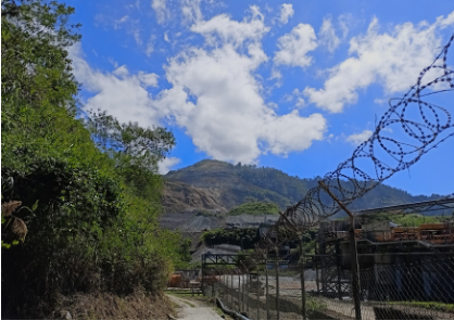VOLUME 17 (Supplement)

SciEnggJ 17 (Supplement) 537-550
available online: 31 December 2024
DOI: https://doi.org/10.54645/202417SupWUO-36
*Corresponding author
Email Address: acnatividad@up.edu.ph
Date received: 19 February 2024
Date revised: 18 July 2024
Date accepted: 10 December 2024
ARTICLE
Trading green for gold: The lived experiences of migrant indigenous peoples with large-scale mining operations in Runruno, Quezon, Nueva Vizcaya, Philippines
Forestry and Natural Resources, University of the Philippines
Los Baños, Los Baños, Laguna 4031, Philippines
2School of Environmental Science and Management, University of
the Philippines Los Baños, Los Baños, Laguna 4031, Philippines
Mining activities have affected rural communities in the Philippines for centuries. In the case of Runruno, indigenous peoples from various parts of northern Luzon migrated to the area as a response to a growing demand for workers in large-scale mining concessions. The researchers analyzed the lived experiences of migrant indigenous peoples as affected by large-scale mining operations. Using ethnographic methods, results revealed that the impacts of large-scale mining among the locals are relative. An individual's inherent condition in the community, such as power and socio-economic status, delineates the magnitude of such. These lived experiences shaped their collective perception of large-scale mining. In terms of economic benefits, a number of locals became employed in the company, but others suffered because small-scale mining was stopped.
Positive social impacts are assistance in healthcare and education, promotion of cultural identity, and capacitating locals through training as part of their Social Development and Management Program. However, the apparent environmental impacts were forest loss and water pollution. The onset of large-scale mining in Runruno has created rapid development which affected the lives of residents, more specifically the migrant indigenous peoples who rely on agrarian activities for their livelihood. The majority of respondents are seeking the closure of the mining company, in spite of the economic benefits and services provided by the mining company. Fairness in benefit-sharing is a pressing issue that should be addressed, as other residents are not satisfied with the initiatives of the company. With the possibility of ceasing extraction in the next few years, locals of Runruno are now confronted with a major socio-economic challenge.
© 2025 SciEnggJ
Philippine-American Academy of Science and Engineering